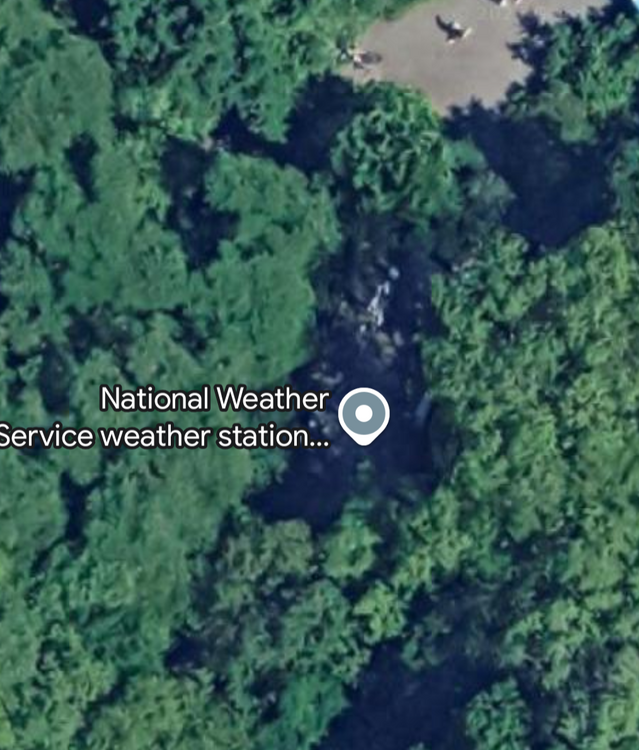-
Posts
11,300 -
Joined
Content Type
Profiles
Blogs
Forums
American Weather
Media Demo
Store
Gallery
Posts posted by Sundog
-
-
11 minutes ago, Brian5671 said:
The timing was pure bad luck-if the river rose like that during the day most would be up and about and would have time to move to higher ground...
Sadly the speed with which this happened and the timing created a perfect storm for losses.
-
6 minutes ago, LongBeachSurfFreak said:
I’m trying to move on. But it annoys the crap out of me when tv Mets report the high temp for the region using the park.
End of June heatwave wasn't so bad, we didn't even hit 100 once!
Lol
-
 1
1
-
-
I just casually checked a few Ambient weather stations in the green suburbs just west of Newark airport and they mostly topped off at 99 degrees. Newark actually represents actual communities.
Central Park only represents the 10 square feet around the station.
-
 2
2
-
-
2 minutes ago, FPizz said:
To me taking the average of both stations is probably the best option. One gets a slight bump down, the other a slight bump up. Newark though is nearly always the hottest whereas NYC a lot of times, even though overgrown, still finishes temp wise in the middle.
Funny thing is people as you said use it, but like no one on the forum lives there. They really should use other stations. Its been an issue with temps and snow measuring forever, but no one cares, so I don't either.
I think you'll find Central Park deviates more from the mean compared to Newark.
Yesterday I was 98 degrees and I am all single family homes with trees and grass.
LGA was also 98. Newark was 100.
Central Park though was only 93! Come on bro
-
My issue with Central Park is the same as Sacrus's, people reference it as the station of record. If it was Islip being stupid I wouldn't care nearly as much.
-
7 minutes ago, lee59 said:
I would call the Newark area as urban with suburbia to the near west and rural to the far west.
The station is at the airport though, not in the city of Newark. The city itself is north of the airport, which is not where the wind blows from during heatwaves to begin with.
Directly west of the airport, it's all single family homes with grass and trees. I would have posted a screenshot but this stupid forum caps images at 12 kilobytes like it's 1995.
Meanwhile the Central Park station is inside the most urban environment in the entire country.
-
7 minutes ago, FPizz said:
5 and 17 for Newark are both garbage. The average of them gets you to where the vast majority of the area are in.
Newark is suburbia and then rural to its west and southwest though. When the winds are westerly or southwesterly during heatwaves, they are blowing over a lot of greenery and open space.
The Central Park station is in a mini jungle, improperly sited compared to all the other official stations surrounded by concrete.
So the conditions between these two stations are actually the opposite.
East Jersey naturally is the hottest area, probably due to some downsloping. Other personal stations in that area even in suburbia get basically as hot as Newark does, you can see them on the Ambient Weather website.
-
I'm back above my day's high and am at 98 degrees with a 74 degree dewpoint.
I didn't think it would get this hot wtf
-
 1
1
-
 1
1
-
-
I peaked at 97 degrees, now 96 degrees.
96/74, what a pleasant afternoon.
-
 1
1
-
 1
1
-
-
Torching here, 95 degrees with a 75 degree dewpoint
-
 1
1
-
-
I'd like to know how bad things have to get before people are like fcck it just do the stratospheric aerosol injection.
I would have already dropped planetary temperatures down to pre industrial levels if I was king of the world.
To be fair, I would also be massively transitioning to clean energy and simultaneously be slowly easing off the aerosols over time.
-
 1
1
-
-
6 minutes ago, forkyfork said:
the least humid summer for the rest of your life
Don't count out stratospheric aerosol injection.
Or nuclear winter.
-
 1
1
-
-
Somerville is reporting 80 degrees with an 80 degree dewpoint and fog/mist.
What is this insanity
-
 2
2
-
-
1 hour ago, Dark Star said:
In general, global warming does lend itself to providing more moisture, but certainly every event cannot be blamed on that. Floods have been happening since the beginning of time. A large portion of society have flocked to live in coastal areas. Others inhabit areas below sea level. And our population keeps encroaching on what used to be rural areas, so more and more people are affected by bad weather. I can't believe anybody on this site believes in "Chemtrails"...
People who believe in chemtrails on a weather board are like astronomers who believe in flat earth.
I guess they never bothered to learn what the "con" in contrails stands for lol
-
 2
2
-
-
KDIX has been brought back from the dead!
For now
-
 2
2
-
-
1 hour ago, FPizz said:
Just was in Aruba for a week, that was enough of that, lol
My wife told me Aruba isn't as safe as it used to be.
Did you notice anything different and what area did you stay in?
-
 2
2
-
-
Seriously though the worst part of this different climate is the absurd levels the dewpoints reach now on a routine basis.
-
 3
3
-
-
17 minutes ago, FPizz said:
87/80
Sounds like a fine day to take the family out for some fun in the Sun.
-
1 hour ago, forkyfork said:
how does a radar site crucial for a big metro area break down every month
This has been an issue for so long that I kind of gotten used to it.
-
26 minutes ago, FPizz said:
Shocked no one has brought up the central park sensor yet on page 13 of this thread. Doh!
I'm working on an extensive post regarding the issue
-
 2
2
-
-
46 minutes ago, donsutherland1 said:
I agree. It is disappointing that the situation at Central Park has been neglected. The data no longer reliably reflects summer conditions in Manhattan. No matter how the data is examined, one sees an unmistakable impact during the summer or full foliage months.
All they have to do is chop back enough to where the shadows don't fall on the station post leaf out.
The station right now has basically no clearance around it:
I have no hope that it will ever have 100 feet of clear land around it, but at least cut back enough to where the shadows aren't all over the station.
-
 1
1
-
-
Surprisingly I got to 66 or 67 degrees last night. I was wondering how it got so cool in the house, I thought my wife forgot to turn off the AC lol.
Then the Sun came up and my temperature jumped 10 degrees in one hour and now I'm 81 degrees.
-
 2
2
-
-
14 minutes ago, Rjay said:
Islip had a sea breeze all day. Nyc is ridiculous lol.
I really think that NWS not giving a shit after 20+ years of this crap just makes the stereotype of government inefficiency look true.
This is such an easy fix, no technical knowledge needed. It can be fixed in one day.
-
 3
3
-
-
Peaked at 93 here, now closer to 90.
The 78 degree dewpoint is just brutal.
-
 2
2
-




July 2025 Discussion-OBS - seasonable summer variability
in New York City Metro
Posted
96 sounds like a lot until you see Ambient weather stations at 95 degrees on Staten Island and several others at 95 or 96 all around the airport, even in much quieter neighborhoods.